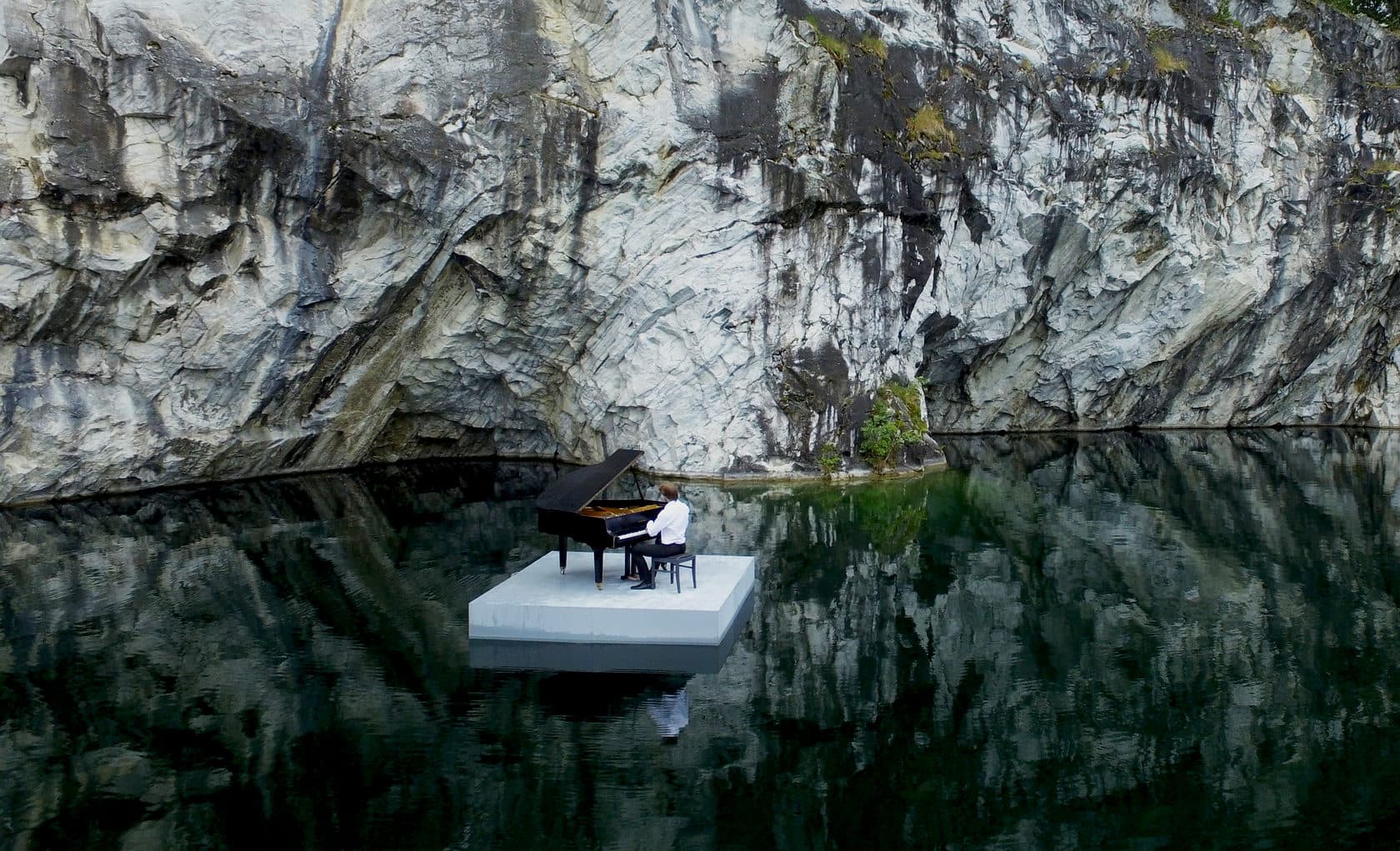The most attention-getting moment in a new short film by Russian pianist Pavel Andreev comes near the end, when a front-loader carrying a mountain of household garbage approaches him from behind, seemingly ready to dump it on the musician and his 11-foot grand. Andreev (pictured, above) sits at a piano in the middle of a landfill in Russia’s northern Leningrad region. He plays an original piece as seagulls hover above and tractors scale the mounds of waste.
I won’t give away what happens next, but it’s probably safe to assume that no pianos were injured in the making of this film. The performance, which is intended to draw attention to global pollution problems, is the latest in a mini-trend of pianists hauling their instruments to far-flung locations – always with cameras close behind.
I recently looked at this phenomenon for Steinway’s Listen Magazine, and particularly at the logistical challenges surrounding such projects. In 2016, for example, pianist Ludovico Einaudi sought to highlight the effects of climate change by performing his Elegy for the Arctic beside melting glaciers in the Arctic Ocean. The haunting performance video has garnered more than seven million views and still circulates across social media.
Distant Locales
Other performers have performed on Alaskan mountaintops and on Utah’s salt flats, all documented on YouTube or Vimeo. The far-flung piano performance can also be an intrinsic part of a festival and its appeal. The Moab Music Festival, located at the gateway to Utah’s Arches and Canyonlands national parks, presents chamber music concerts each summer in a red-rock grotto on the banks of the Colorado River. Before each performance, a Steinway Model B is transported to the secret location by jet boat.

Operations Director Dave Montgomery told me that the move starts before dawn, when a team of six to nine workers load the tightly-wrapped instrument onto the boat from a launch site forty-five minutes upstream. “There may be some times where there’s only one piece with a piano and it may be a short piece,” Montgomery said. “I think, ‘couldn’t they have changed the program?’ But we’ve got to bring the piano.”
Then there are simply those remote parts of the planet where people have a desire to make music, and only a grand piano will do. In 2012, Chile-based concert pianist Mahani Teave started a music school on Easter Island, where she was raised. A dozen or so pianos were shipped to the fragile, 15-mile-wide island 2,000 miles off the coast of Chile. Transportation was arranged by a student’s mother who owned a freight ship; Teave herself had a 1913 Steinway Model O flown in.
“We’re on an island and things are always a lot more challenging,” Teave said, acknowledging the occasional rainstorms that render the surrounding area muddy. “You always have to have a plan A, B and C. But everybody here vibrates with the music, art and dance. So it’s the place to be doing this.”
Also see: Victory Verticals: During World War II, Steinways were shipped to every theater of war.








Leave a Reply